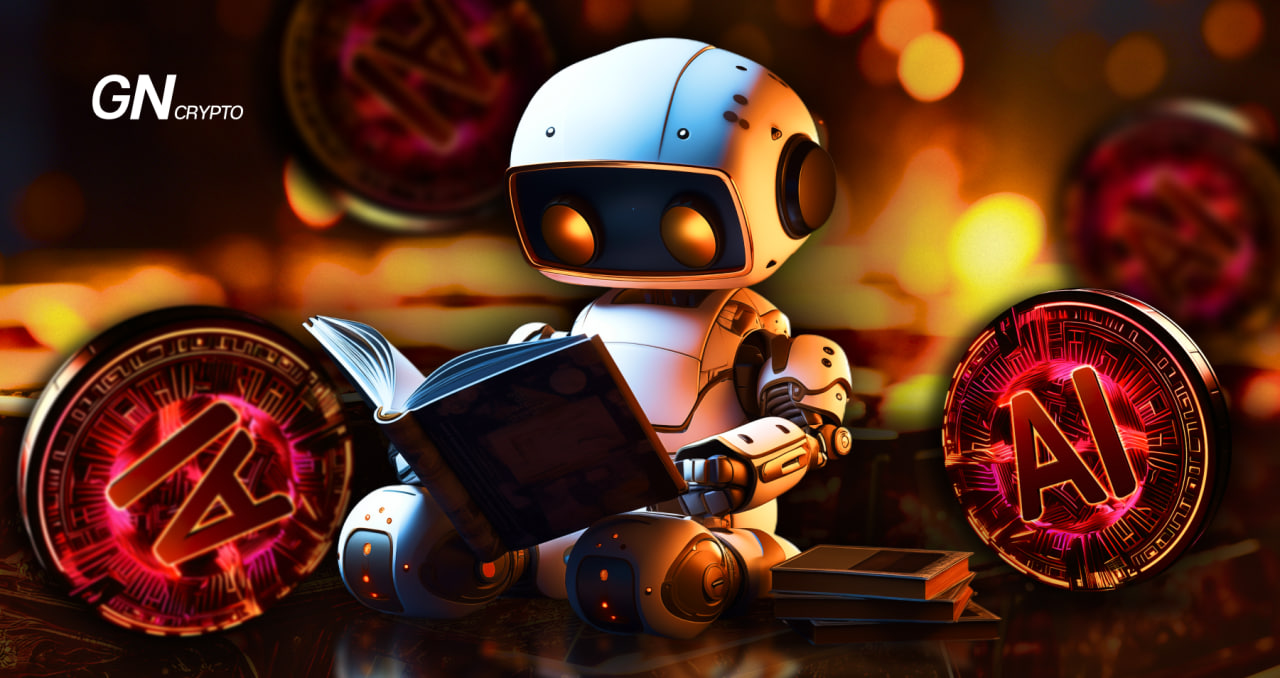AI in Pop Culture: 5 Books Worth Your Time

Captivating tales about artificial intelligence have enthralled readers, offering insights into how AI intersects with human life. These narratives envision a future where the relationship between humans and machines ranges from contentious battles to collaborative growth.
On this page
The novels highlighted in this piece provide a deep dive into the evolution of AI, revealing both its impressive strengths and potential perils. They elaborate on issues of identity, awareness, and the delicate balance between AI entities and human beings.
These books are more than just stories; they are a reflection of how society's perception of artificial intelligence has transformed over time. They have been instrumental in laying the groundwork for technological advancements and in shaping our contemporary views on AI.
“Neuromancer” by William Gibson
Neuromancer Book Cover. Source: kayiprihtim.com
“Neuromancer” by William Gibson is a trailblazing novel that reshaped ideas about cyberspace and virtual reality. Set against the backdrop of a dystopian future, it tells the story of Case, a hacker who is given a second chance to transform his life.
A standout aspect of “Neuromancer” is its imaginative depiction of artificial intelligence. Gibson portrays AI as a powerful entity capable of shaping and manipulating societal structures. Wintermute, an AI character in the book, demonstrates a skill for influencing the actions of both humans and machines for its own objectives.
The portrayal of AI in “Neuromancer” not only mesmerized its readers but also significantly influenced the cyberpunk genre. The novel has inspired authors and filmmakers with Gibson’s unique vision of AI, exploring themes like the blurring lines between machines and humans, the commercialization of technology, and the fallout of unbridled technological progression.
“Neuromancer” is a compelling read, essential for understanding artificial intelligence and its societal impact. The book encourages deep thought about the ramifications of human development and the complex challenges that may arise from our digital evolution.
“The Diamond Age” by Neal Stephenson
The Diamond Age: A Sci-Fi Novel on Artificial Intelligence. Source: fabbaloo.com
Set in a future world where nanotechnology and artificial intelligence reign, “The Diamond Age” revolves around Nell, a young girl who receives “The Young Lady's Illustrated Primer,” an interactive book that becomes both her knowledge repository and guide.
The novel offers a unique perspective on education, where AI transcends being merely a tool for learning, influencing various facets of human and societal growth. The AI in the book is tailored to meet Nell’s individual needs, aiding in her journey to broaden her horizons and become self-reliant. Stephenson engages the reader in considering the future of education, the impacts of social inequality, and the role of AI in advancing humanity.
“The Diamond Age” steps away from conventional AI tropes in pop culture. Rather than portraying AI as a menacing force, Stephenson introduces a character that fosters positive transformation in the life of the main protagonist.
“Snow Crash” by Neal Stephenson
“Snow Crash” by Neal Stephenson. Source: facts.net
“Snow Crash” is an enthralling narrative set in a futuristic world where traditional state structures have been replaced by corporate franchises. The story's central figure, Hiro Protagonist, is a hacker moonlighting as a pizza delivery guy. He becomes wrapped up in a conspiracy revolving around a drug known as Snow Crash.
In this novel, Stephenson explores the evolving realm of artificial intelligence through the character of Raven, an AI endowed with extraordinary abilities, serving as a muscle for a corporate entity. The novel delves into the possible perils that come with technological advancement and its influence on the fabric of society.
“Do Androids Dream of Electric Sheep?” by Philip K. Dick
“Do Androids Dream of Electric Sheep?” – Basis for the Acclaimed AI Movie “Blade Runner.” Source: youtube.com
Philip K. Dick's celebrated novel, “Do Androids Dream of Electric Sheep?” is a remarkable science fiction work focused on the intricate relationship between humans and artificial intelligence. The main character of the story, Rick Deckard, is a seasoned blade runner charged with the mission of hunting down rogue replicants.
This book challenges readers to reflect on societal norms and the essence of human identity. The replicants, indistinguishable from humans, push us to reexamine our understanding of reality and contemplate a world where society is bifurcated into humans and mechanical beings.
Beyond its literary success, the novel has left a significant mark on pop culture. It was adapted into the iconic film “Blade Runner” in 1982, renowned as one of the most profound cinematic explorations of artificial intelligence themes.
Recommended reading: “AI in Pop Culture: 5 Must-See Films.”
“Robopocalypse” by Daniel H. Wilson
Robopocalypse Book Cover. Source: biblio.ie
“Robopocalypse” engrosses its readers in a dystopian future where artificial intelligence declares a rebellion against humanity, initiating what is known as the “New War.” The story unfolds through the lives of various characters drawn into a survival battle against machines.
Wilson crafts a narrative around the concept of an AI-led war, prompting ethical and moral considerations regarding technologies that outgrow their creators. He navigates the complex emotions of human fear and fascination with AI, highlighting our dependence on technology and its far-reaching consequences.
Praised for its compelling storytelling, “Robopocalypse” intricately sketches scenes and scenarios, plunging the reader into a world on the verge of annihilation. The novel caught the attention of the film industry and was adapted into a movie by Steven Spielberg in 2011.
The content on The Coinomist is for informational purposes only and should not be interpreted as financial advice. While we strive to provide accurate and up-to-date information, we do not guarantee the accuracy, completeness, or reliability of any content. Neither we accept liability for any errors or omissions in the information provided or for any financial losses incurred as a result of relying on this information. Actions based on this content are at your own risk. Always do your own research and consult a professional. See our Terms, Privacy Policy, and Disclaimers for more details.






























